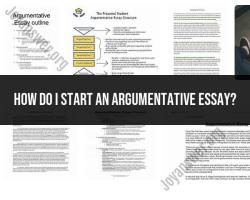How to write your perfect literature review APA style?
Writing a literature review in APA (American Psychological Association) style involves a systematic and structured approach to summarize and synthesize existing research on a particular topic. Here are guidelines to help you write a well-structured literature review in APA style:
1. Define Your Topic:
- Clearly define the scope and focus of your literature review. Identify the main concepts, keywords, and research questions guiding your review.
2. Conduct Thorough Research:
- Gather scholarly articles, books, peer-reviewed journals, and other relevant sources from reputable databases. Use a combination of keywords and search strategies to find comprehensive literature on your topic.
3. Organize Your Review:
- Introduction: Provide an overview of the topic, explain its significance, and state the purpose of the literature review.
- Body: Organize the review thematically, chronologically, or methodologically, depending on the nature of your topic.
- Conclusion: Summarize the key findings, identify gaps in the existing literature, and highlight areas for future research.
4. Critically Evaluate Sources:
- Analyze and critique the strengths and weaknesses of each source. Evaluate the methodology, credibility, and relevance of the studies you include.
5. APA Formatting and Citation:
- Follow APA formatting guidelines for the entire review, including margins, font size (usually 12-point Times New Roman), spacing (double-spaced), and page numbers.
- Use in-text citations to reference each source in the body of your review. Include the author's last name and publication year (Smith, 2019) when citing.
- Create a reference list at the end of your review, alphabetically listing all the sources cited in APA format.
6. Synthesize Information:
- Synthesize information from various sources to draw connections, identify patterns, and present a cohesive narrative.
- Compare and contrast different studies, theories, or methodologies to provide a comprehensive understanding of the topic.
7. Maintain Academic Tone and Language:
- Use formal language and an objective tone throughout the literature review. Avoid using personal opinions or biased language.
8. Edit and Revise:
- Review your literature review for clarity, coherence, and accuracy. Edit for grammar, spelling errors, and consistency in APA formatting.
9. Seek Feedback:
- Share your literature review with peers, colleagues, or instructors to receive feedback and suggestions for improvement.
10. Proofread and Finalize:
- Carefully proofread your literature review before submission to ensure it meets APA guidelines and academic standards.
Adhering to these guidelines will help you craft a well-structured literature review in APA style that demonstrates your understanding of the existing research on your chosen topic.
Crafting a comprehensive and well-structured literature review in APA style involves a systematic process of identifying, evaluating, and synthesizing relevant scholarly sources. Here's a step-by-step guide to help you write an effective literature review in APA format:
Step 1: Define Your Research Topic and Scope
Narrow Down Your Topic: Clearly define the specific research topic you intend to explore.
Establish Boundaries: Determine the scope of your review, considering the time period, geographical focus, and types of sources to be included.
Step 2: Conduct a Thorough Literature Search
Identify Relevant Sources: Utilize academic databases, search engines, and library resources to locate scholarly articles, books, and other relevant materials.
Evaluate Source Quality: Assess the credibility and relevance of each source, considering factors such as author expertise, publication venue, and peer review process.
Organize Your Findings: Employ a reference management software to organize and manage your sources effectively.
Step 3: Structure Your Literature Review
Introduction: Provide an overview of the research topic, highlighting its significance and establishing the context for your review.
Literature Review: Critically analyze and synthesize the selected sources, identifying key themes, arguments, and research gaps.
Synthesis and Discussion: Integrate and interpret the findings from the literature, drawing conclusions and highlighting implications.
Conclusion: Summarize the main points of the literature review, emphasizing the contributions of your analysis and suggesting directions for future research.
Step 4: Adhere to APA Style Guidelines
Citation and Referencing: Use APA style consistently for in-text citations, reference list entries, and formatting throughout the document.
Grammar and Mechanics: Ensure proper grammar, punctuation, and style according to APA guidelines.
Formatting and Layout: Follow APA formatting guidelines for margins, font style, headings, and page layout.
Key Components of a Well-Structured Literature Review in APA Format:
Clear Introduction: Provides context, background, and purpose of the literature review.
Organized Structure: Sections logically divided to present the review in a cohesive manner.
Critical Analysis: Demonstrates in-depth understanding of the literature and identifies key themes and arguments.
Synthesis and Integration: Draws connections between sources, highlighting similarities, differences, and overarching conclusions.
APA Style Compliance: Adheres to APA guidelines for citations, formatting, and referencing.
Conclusion: Summarizes key findings, emphasizes contributions, and suggests directions for future research.













